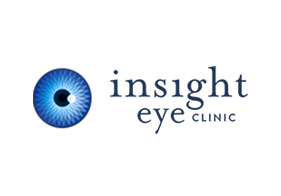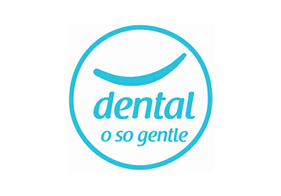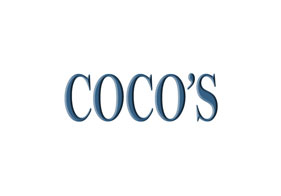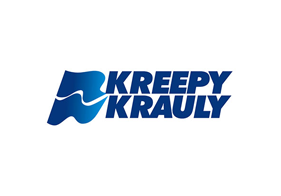The Ultimate Guide to Digital Marketing ROI for Your Business
If you run a business and you want more sales from your digital marketing efforts, you need to monitor the performance of the various strategies in use constantly. To do this, you will use the KPIs and metrics you identified to evaluate the success of these strategies. This gives you data for decision-making.
Evaluating the performance of a digital marketing campaign helps you identify what’s working and what’s not. In other words, you get to know which marketing efforts are worth keeping because they have high returns.
The best way to evaluate the performance of digital marketing campaigns is to calculate the returns on investment (ROI). In this article, we explain what ROI in digital marketing is, how it’s calculated, and how you can improve it over time.
What is Digital Marketing ROI?
Simply put, digital marketing ROI is the profit you earn from the investment money you have put into every digital marketing strategy. In business, ROI is a metric that evaluates the profitability of an investment.
While it’s not the only indicator of business growth, digital marketing ROI can be attributed to aspects like sales volume, revenue growth, and brand recognition. This is because digital marketing can have more than one objective, including creating brand awareness.
Note that digital marketing ROI can be of positive or negative value. When you get a positive value, it means that your marketing efforts are bringing value to the business. The vice versa is also true. Therefore, you can use this to assess the various digital marketing efforts in place and allocate more resources to performing strategies.
The Importance of Measuring ROI in Digital Marketing
In your business, you track a lot of things. Why not do the same for digital marketing? The best part is that there are tons of benefits to measuring digital marketing ROI.
- Helps with strategic decision-making. You make a lot of decisions in your business, especially regarding budget allocation. Measuring the ROI of your digital marketing strategies gives you data that you can use to make strategic decisions.
- Aligns marketing with business strategy. As we mentioned earlier, ROI can be attributed to the growth of your business. Therefore, measuring it helps you figure out if digital marketing is contributing to business growth or not.
- Identifies improvement opportunities. If your company relies heavily on digital marketing (and it should), you should measure ROI often to identify areas of improvement for iterative strategy implementation.
- Provides justification for budget allocation. You cannot keep funding a certain digital marketing tactic without clear returns and expect positive results. Therefore, if the ROI comes up positive, that’s enough reason to allocate a bigger budget.
KPIs That Drive ROI in Digital Marketing
ROI is a metric that is influenced by several Key Performance Indicators (KPIs). In digital marketing, KPIs are the metrics of a specific action. To define metrics, digital marketers outline the goals of their digital marketing campaigns and identify the possible actions that the targeted demographic will take.
Metrics are chosen based on the business goals. For instance, if your business goals are sales, you will choose metrics such as conversions. On the other hand, if you just want to increase brand recognition, you will focus on website traffic.
Major Categories of KPIs
We can group KPIs into various categories based on the specific focus of the metric. Here are some common categories;
Lead-Focused KPIs
As the name suggests, these KPIs are focused on leads. A lead is defined as a person who has shown interest in your business offerings by engaging with your online channels. Some of the common lead-focused KPIs are;
- Cost Per Lead (CPL): This shows how much it costs to generate one lead. To get CPL, you divide the total expenses of the campaign by the total number of leads generated over time.
- Lead Close Rate: Here, you determine the rate of closing a lead. In other words, it examines the sales you make versus the leads you have. It should not be confused with conversion rates.
Customer-Focused KPIs
A major goal of digital marketing is to convert leads into customers. With customers, you have to measure different KPIs because they also interact with your business differently. Examples of customer-focused KPIs include;
- Cost Per Acquisition (CPA): This measures the money spent to acquire a paying customer using digital marketing tactics.
- Customer Lifetime Value (LTV): You can also estimate the expected revenue that a single customer can bring into your business. Recurring customers have a higher LTV than one-time shoppers.
Engagement-Focused KPIs
Engagement is also an important KPI to measure for your digital marketing efforts. It involves the specific actions taken by the target audience on specific channels. For an engagement metric to be considered helpful, it has to have a direct impact on ROI. Examples include;
- Click-Through Rate (CTR): This shows the rate at which the target audience clicks on ads, links, and call-to-action (CTA) buttons. CTR is calculated by dividing the total number of clicks by the total measured impressions and multiplying by 100.
- Impressions: Each view of an ad is counted as an impression. Views also count as engagements.
It is important to keep in mind that engagement metrics depend on the online channel you are on, and they differ. For instance, social media engagement metrics are far more different than website engagement metrics.
While engagement metrics such as shares, likes, and comments are important to track, they lack a direct impact on return on investment. This is true, especially if the primary objective of the digital marketing campaign is sales.
How to Calculate ROI for Digital Marketing
The various KPIs we have outlined above are important in the calculation of the overall digital marketing ROI.
ROI for digital marketing is calculated using a basic formula that looks like this;
ROI = (Net Profit / Total Cost) x 100
Where;
- ROI is returns on investment.
- Net Profit is the total revenue generated minus total costs spent.
- Total costs are the sum of all expenses incurred.
This formula implies that ROI is expressed as a percentage. To interpret the values, consider the following.
- A high percentage ROI means that the investment made in digital marketing yielded huge returns.
- A low percentage ROI shows that the investment did not yield huge returns.
Digital marketing ROI can be calculated on a short and long-term basis.
Short-term ROI
This ROI assesses the immediate returns on investment from a digital marketing campaign. You’re the one who will determine how long this period will be. Typically, most businesses measure short-time ROI after a quarter or a year.
The benefits of short-term ROI are that it helps you gauge the progression of the campaign and gives you an opportunity to optimise the campaign.
Long-term ROI
With long-term ROI, the profitability of the digital marketing tactics is calculated over a longer period, usually over a year. This shows you the overall benefits of the marketing efforts.
Long-term ROI helps you gauge brand positioning, customer lifetime and value. This is the best way to calculate profit or loss from your business. Results from long-term ROI helps you plan for scalability and new directions for your business.
What’s a Good Digital Marketing ROI?
Most people ask this question. However, there’s no definitive answer since digital marketing requires a tailored approach, meaning objectives differ.
However, there is a general formula used to define “good” that you can apply to your business. It’s commonly agreed that a 5:1 ROI is good. Essentially, this means that you should aim for a return of $5 for every $1 spent. Anything above that is considered excellent, while below is considered poor.
Factors Influencing Digital Marketing ROI
Earlier, we discussed the various KPIs that you should monitor to measure the ROI of your digital marketing efforts. On top of these, there are several factors that dictate whether you will have a positive or negative ROI, as well as the corresponding values.
These factors include;
- The initial budget: If you dedicate a higher budget to digital marketing, the higher your chances of having a huge return. This is because you can afford professional digital marketing services with a good budget.
- The investment period: The ROI you realise when you measure short and long-term ROI will differ.
- Your digital marketing strategies: If you want a high positive ROI, create a strategy that works for your business. Digital marketers know how to design a strategy that works for a specific business.
- Market conditions: At times, the market forces might affect your ROI. For instance, you might experience losses during a recession.
- Nature of your business: The ROI from your digital marketing strategies will also be influenced by the industry you’re in, the type of products/services you sell, and other operational standards.
ROI by Digital Marketing Channel
Different digital marketing channels have different ROI. A channel is the specific medium or platform you use to execute the marketing activities. These channels include social media platforms, websites, search engines, email, and so on.
Most digital marketers use more than one platform or channel for every campaign. This is because we understand that potential customers are also found on multiple platforms, which means the chances of ROI are higher.
One of the considerations we make when choosing channels is that we don’t direct equal resources to all channels. This is because some channels have a higher ROI than others.
According to results from various digital marketing case studies, we have discovered the following returns based on the channels used.
- SEO and email marketing have the highest ROI.
- Content marketing has the lowest cost per lead.
- SEO has the highest close rate.
- Social media marketing generates the lowest order value.
- Direct and search traffic have the highest order value.
How to Improve Your Digital Marketing ROI
Poor digital marketing ROI means that your strategies are not performing or you are investing resources the right way. Here are a few ways you can improve the ROI.
- Set clear goals: The main goal of a digital marketing strategy should be the following: Ask yourself what you want to achieve and create plans on how to achieve it. That’s your goal.
- Make data-driven decisions: Ensure that each decision you make can be supported by data. Therefore, analyze each item when coming up with strategies.
- Optimise each content you create: Content optimisation includes enriching it with relevant keywords and media. The goal here is to make the content valuable, digestible and easily recoverable.
- Perform various tests: Testing is what lets you know how digital marketing is performing before you measure the ROI. Common tests you should try include A/B tests, which tell you which strategy works best.
- Automate where possible: There are various tools you can use to automate various digital marketing aspects, including monitoring, creation, and distribution. Use these tools to save time and resources.
As a bonus point, ensure the marketing strategies are in line with your brand guidelines to avoid misrepresenting your brand. This means you should ensure a consistent tone across all channels. This also helps your marketing efforts to attract the right leads, which is important for conversion purposes.
Final Thoughts
ROI will remain a key indicator of the performance of digital marketing. Ensure you are optimising the KPIs we outlined and measuring the ROI often. When you do, you will realise the power of digital marketing. Also, as digital marketing evolves, so should you. That means you need to adopt new strategies and tools to ensure you’re staying ahead of the competition.
Are you tired of losing your investment to non-performing marketing strategies? We are here to help. Our comprehensive digital marketing services cover everything from SEO to social media. Call us, and let’s discuss how to grow your ROI.



























